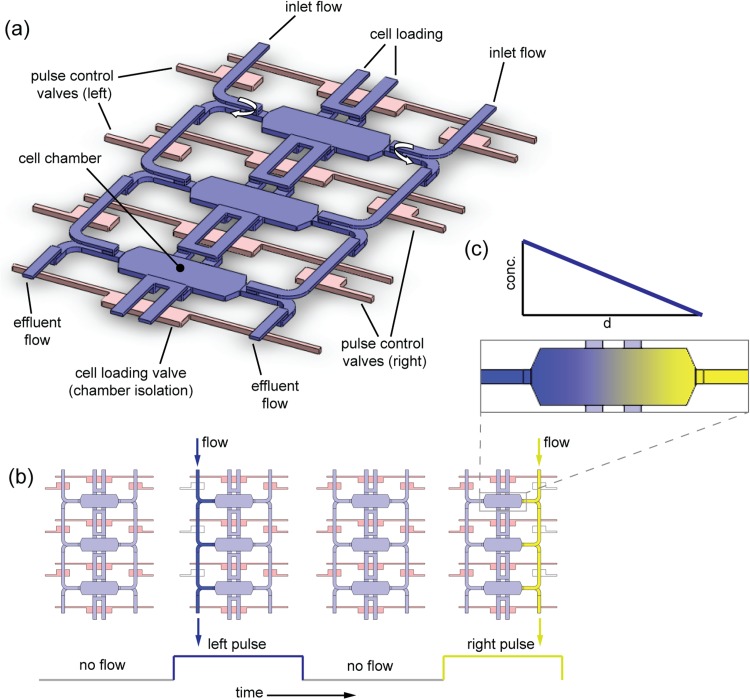Figure 1.
Chamber array architecture and sequentially pulsed fluid delivery. (a) Chambers (blue), flow channels (blue), and valves (pink) form a 3-dimensional network. Media (with or without stimulus) are input along sides, while cells are loaded via central channels. Flow travels along either side of the chambers and undergoes “wrap-around” flow (curved arrows), leaving the central part of the chambers undisturbed by flow. Integrated valves regulate flow in top layer channels. (b) Four phases of pulsing sequence. Sequence begins with all valves closed, then left side valves open to release flow pulse with high concentration (dark blue). All valves close again; then right side valves open to release a flow pulse with low concentration (dark yellow). The sequence repeats throughout the experiment. (c) Flow pulses replenish each side with their respective input concentrations, establishing effectively constant boundary conditions. A gradient forms via diffusion-dominated mass transport.

